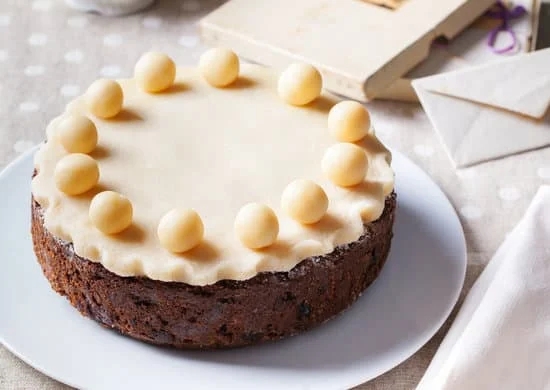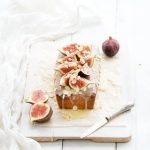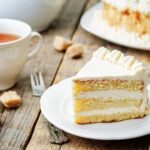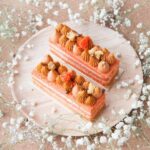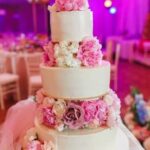If you’re looking to elevate your cake decorating skills, mastering the art of creating delicious and visually appealing icing is essential. From simple buttercream to intricate royal icing designs, the possibilities are endless when it comes to decorating cakes. In this article, we will delve into the world of decorating icing for cakes and provide you with a comprehensive guide on how to create stunning designs that will impress any guest at your next gathering.
Whether you’re a novice baker or a seasoned pro, understanding the different types of decorating icing is crucial for achieving the desired look for your cakes. From classic buttercream to elegant fondant, each type of icing offers unique textures and finishes that can take your cakes to the next level.
Learning how to work with various types of icing will allow you to experiment with different techniques and create one-of-a-kind designs that showcase your creativity and skill.
To get started on your cake decorating journey, it’s important to have a solid understanding of the essential ingredients needed for making decorating icing. From powdered sugar and butter to meringue powder and food coloring, each ingredient plays a vital role in creating the perfect consistency and flavor for your icing. By following our step-by-step guides on making buttercream, royal icing, and fondant, you’ll be well-equipped to tackle any decorating project with confidence and precision.
Types of Decorating Icing
When it comes to decorating cakes, choosing the right type of icing is crucial. Each type of icing offers a unique texture, taste, and consistency that can greatly impact the final look and flavor of your cake. The most popular types of decorating icing include buttercream, royal icing, fondant, and more.
Buttercream icing is a classic choice known for its creamy texture and versatility. It is made from butter or shortening, powdered sugar, vanilla extract, and a small amount of milk or cream. This type of icing is perfect for piping borders and creating intricate designs on cakes. Buttercream can also be flavored in various ways by adding extracts or food coloring.
Royal icing is another popular choice that hardens to a smooth finish once dried. It is made from confectioners’ sugar, meringue powder or egg whites, and water. Royal icing is ideal for creating detailed decorations like flowers, lace patterns, and lettering on cakes. Its quick-drying properties make it great for intricate designs that need to hold their shape.
Fondant icing has gained popularity for its smooth finish and ability to create flawless cake decorations. Fondant is made from sugar, water, gelatin or agar agar, glycerin, and flavorings. It can be rolled out into thin sheets to cover cakes completely or molded into shapes for decorations like bows or flowers. Fondant provides a clean canvas for intricate designs and custom cake creations.
| Type of Icing | Main Ingredients |
|---|---|
| Buttercream | Butter/Shortening, Powdered Sugar,Vanilla Extract,Milk/Cream |
| Royal Icing | Confectioners’ Sugar,Meringue Powder/Egg Whites,Water |
| Fondant | Sugar,Gelatin/Agar Agar,Glycerin,Variety Flavorings |
Essential Ingredients for Making Decorating Icing
When it comes to creating beautifully decorated cakes, having the right ingredients for your decorating icing is crucial. The key to achieving the perfect consistency and flavor lies in using high-quality ingredients that are specifically designed for icing recipes. Some of the essential ingredients for making decorating icing include butter or shortening, confectioners’ sugar, vanilla extract, milk or water, and salt.
Buttercream icing is a popular choice for decorating cakes due to its creamy texture and rich flavor. To make a basic buttercream icing, you will need unsalted butter, confectioners’ sugar, vanilla extract, and a touch of milk or cream. The butter should be softened at room temperature before beating it with the sugar until light and fluffy. Add in the vanilla extract and milk gradually until you achieve the desired consistency for spreading or piping onto your cakes.
Royal icing is another versatile option for decorating cakes, cookies, and other desserts. This type of icing is made from egg whites or meringue powder, confectioners’ sugar, and water. Royal icing dries hard which makes it ideal for intricate decorations like flowers or lace designs.
Fondant icing, on the other hand, is a smooth and pliable mixture of sugar paste that can be rolled out and draped over cakes for a flawless finish. With these essential ingredients in hand, you’ll be well on your way to mastering the art of decorating with icing on cakes.
Step-by-Step Guide to Making Buttercream Icing
Buttercream icing is a versatile and delicious option for decorating cakes. Whether you’re making a simple birthday cake or an elaborate wedding cake, buttercream icing can be the perfect choice to add flavor and flair to your creation. In this step-by-step guide, we will walk you through the process of making buttercream icing from scratch.
The key ingredients for making buttercream icing include unsalted butter, powdered sugar, vanilla extract, and heavy cream. The ratio of these ingredients will determine the consistency of your icing, whether you want it to be more stiff for piping intricate designs or softer for spreading smoothly over a cake. You can also add food coloring to achieve your desired shade.
To make buttercream icing, start by beating room temperature butter until it is creamy. Gradually add in the powdered sugar, vanilla extract, and heavy cream while continuing to beat the mixture until it is smooth and fluffy. If the icing is too thick, add more heavy cream; if it’s too thin, add more powdered sugar. Once you have reached your desired consistency, your buttercream icing is ready to use for decorating cakes.
| Ingredients | Ratios |
|---|---|
| Unsalted Butter | 1 cup |
| Powdered Sugar | 4 cups |
| Vanilla Extract | 1 tsp |
| Heavy Cream | 2-4 tbsp depending on desired consistency |
Step-by-Step Guide to Making Royal Icing
Royal icing is a versatile and classic type of decorating icing that is commonly used for intricate designs on cakes, cookies, and other baked goods. This smooth and hard-drying icing is perfect for creating detailed decorations such as lace patterns, flowers, and intricate borders. Making royal icing at home is surprisingly simple and requires just a few key ingredients.
Ingredients Needed
To make royal icing, you will need just three basic ingredients: egg whites or meringue powder, confectioners’ sugar (also known as powdered sugar), and water. Egg whites give the icing its signature firm texture when dried, but if you prefer to avoid using raw eggs, meringue powder can be a great substitute. Make sure your confectioners’ sugar is sifted before using it to ensure a smooth consistency in your royal icing.
Instructions
- In a clean bowl, combine the egg whites or meringue powder with the confectioners’ sugar.
- Gradually add water while mixing until you reach your desired consistency. The icing should be thick enough to hold its shape when piped but thin enough to spread easily.
- If you are looking to achieve different consistencies for flooding (filling in large areas) or piping (creating fine details), adjust the amount of water accordingly.
- Use immediately or cover with plastic wrap touching the surface of the icing to prevent drying out.
- When decorating with royal icing, make sure to work quickly as it dries fast once exposed to air.
Whether you are a beginner baker or experienced cake decorator, mastering the art of making royal icing can take your creations to the next level with its versatility and ability to create stunning designs on cakes and cookies alike. Experiment with different consistencies and techniques to bring your cake decorating skills to new heights.
Step-by-Step Guide to Making Fondant Icing
Fondant icing is a popular choice for decorating cakes due to its smooth finish and versatility in creating intricate designs. This type of icing is pliable and can be rolled out to cover cakes or shaped into decorations. Making fondant icing from scratch may seem daunting, but with the right ingredients and step-by-step guide, you can easily create your own beautiful fondant decorations.
Ingredients
To make fondant icing at home, you will need marshmallows, water, confectioners’ sugar (also known as powdered sugar), gelatin, vegetable shortening, and flavorings such as vanilla extract. These simple ingredients can be found in most grocery stores and are essential for creating a smooth and delicious fondant that is perfect for decorating cakes.
Instructions
- Begin by microwaving the marshmallows with water until they are melted and smooth.
- Add gelatin to the mixture and stir until it is fully dissolved.
- Gradually add sifted confectioners’ sugar while stirring continuously until a dough forms.
- Knead the dough on a surface dusted with powdered sugar until it is smooth and elastic.
- Wrap the fondant in plastic wrap and let it rest for at least 24 hours before using it to decorate your cake.
Tips for Working With Fondant
- To prevent sticking, dust your work surface with powdered sugar or cornstarch when rolling out the fondant.
- If the fondant becomes too dry or stiff, knead in a small amount of vegetable shortening to soften it.
- Store any unused fondant in an airtight container at room temperature to prevent it from drying out.
By following these steps and tips, you can master the art of making fondant icing at home and use it to create stunning decorations for your cakes.
Tips and Tricks for Decorating With Icing
Decorating cakes with icing can be a fun and creative process, but it also requires some skill and technique to achieve the desired results. Here are some tips and tricks to help you master the art of decorating with icing:
- Use the right consistency: One of the most important aspects of successful cake decorating is using the correct consistency of icing. For intricate designs, use stiff icing, while for smooth finishes, opt for thinner icing.
- Practice piping techniques: Piping is a fundamental skill in cake decorating, so it’s essential to practice different piping techniques like lines, dots, swirls, and rosettes. Start with basic designs and gradually work your way up to more intricate patterns.
- Keep your tools clean: Cleanliness is key when it comes to cake decorating. Make sure your piping bags, tips, and spatulas are clean before you start decorating to avoid any unwanted residue in your icing.
In addition to these tips, there are also some tricks that can help make your cake decorating experience even smoother:
- Chill your cakes before decorating: Chilling your cakes in the refrigerator before applying icing can make them easier to work with and less likely to crumble or break during decoration.
- Add flavors and colors: Get creative with your decorating by adding different flavors or colors to your icing. Use extracts like vanilla or almond for added flavor, or food coloring gels to create vibrant hues for a visually appealing finish.
- Practice patience: Cake decorating takes time and patience. Don’t rush through the process; take your time to perfect each design element and enjoy the creative journey of turning a simple cake into a work of art.
By following these tips and tricks, you’ll be well on your way to mastering the art of decorating with icing and creating stunning cakes that will impress friends and family alike. Remember that practice makes perfect, so don’t be afraid to experiment and have fun with your cake decorations.
Creative Ideas for Decorating Cakes With Icing
Decorating cakes with icing opens up a world of creative possibilities that can truly make your baked creations stand out. Whether you are a beginner or a seasoned baker, experimenting with different techniques and designs can elevate your cakes to the next level. Here are some creative ideas for decorating cakes with icing:
- Using Piping Bags: Invest in a set of piping bags and various tips to create intricate designs on your cakes. You can pipe borders, flowers, swirls, letters, and more to add a personalized touch to your creations.
- Layering Colors: Create stunning ombre effects by layering different shades of icing on your cake. Start with the darkest color at the bottom and gradually transition to lighter colors as you move up the cake for a visually appealing finish.
- Stencil Designs: Stencils are an easy way to add detailed patterns or images to your cake. Simply place the stencil on the cake and gently dust or spread icing over it for a professional-looking design.
Unleash your creativity with these ideas and experiment with different techniques to decorate cakes that will impress your friends and family. Remember, practice makes perfect, so don’t be afraid to try new things and have fun while decorating.
Conclusion
In conclusion, mastering the art of decorating icing for cakes opens up a world of creative possibilities for any baker. Whether you choose to work with buttercream, royal icing, fondant, or any other type of decorating icing, understanding the essential ingredients and step-by-step guides is key to achieving beautiful and delicious results.
One essential aspect of perfecting your cake decorating skills is paying attention to detail and practicing different techniques. From piping flowers and intricate designs with buttercream to creating delicate lace patterns with royal icing, the more you experiment and practice, the more confident you will become in your abilities.
Additionally, don’t be afraid to think outside the box when it comes to decorating cakes with icing. Mix and match different types of icing, incorporate edible decorations like fresh fruits or edible flowers, or even try out unconventional techniques like painting with edible food coloring.
The only limit is your imagination when it comes to creating stunning cakes that not only taste amazing but also look visually appealing. Mastering the art of decorating icing for cakes can truly take your baking skills to the next level.
Frequently Asked Questions
What Icing Is Best for Decorating Cakes?
The best icing for decorating cakes is royal icing, known for its smooth and hard finish, making it perfect for intricate designs like piping details, flowers, and borders.
What Frosting Do Professionals Use?
Professionals often use Swiss meringue buttercream frosting due to its smooth texture, stability, and ability to hold intricate designs. It is made from egg whites, sugar, and butter, providing a luxurious taste.
What Are the 5 Most Commonly Used Icings for Cakes?
The five most commonly used icings for cakes are buttercream, cream cheese frosting, fondant, ganache, and whipped cream. Each type offers unique characteristics in terms of flavor, texture, and ease of use when decorating cakes.

Welcome to our cake decorating blog! My name is Destiny Flores, and I am the proud owner of a cake decorating business named Cake Karma. Our mission is to provide delicious, beautiful cakes for all occasions. We specialize in creating custom cakes that are tailored specifically to each customer’s individual needs and tastes.

